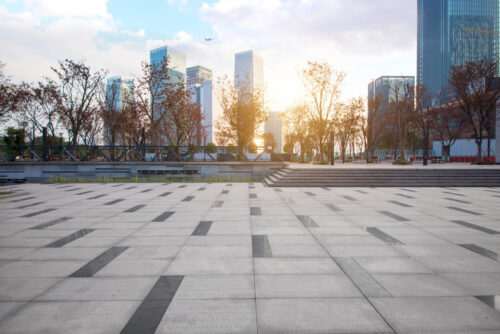Can you lay porcelain paving on screed?
Before we dissect the answer to this question, we need to understand more about screed and what it does
Before we dissect the answer to this question, we need to understand more about screed and what it does.
Screed is a mixture of cement, sand and water that is applied to a concrete or asphalt subfloor. It is the foundation on which your porcelain paving will be bedded.
The primary reason for using screed is to level out an uneven surface before the slabs are laid.
Porcelain pavers are manufactured to a high standard. However, if there are variations in depth then you need something to accommodate these anomalies so the paved area is as perfect as possible.
Laying porcelain slabs on screed will also ensure your porcelain slabs are not only well supported but also that have a greater resistance to moisture.
This is because screed helps drainage by allowing water to be absorbed into the layers below.
How do I make a screed bed?
Screed is made by mixing one part cement to four parts sand and a small amount of water – that’s if you want to make your own.
But you can also buy a ready-made levelling compound to save time and reduce the possibility of error.
Preparing the surface prior to laying the screed is critical because this will ensure the porcelain slabs adhere to the surface effectively.
For outdoor projects, it is advisable to use mechanical methods to achieve a good result, for example shot blasting or grinding the surface, which should also be dry and in good condition before you begin.
A screed bed should ideally be around 50mm thick.
This will allow you enough screed to be able to bed down your porcelain slabs. Any shallower, and they will not be as securely fixed. Conversely, use a thicker layer and you are probably wasting materials.
What benefits are there from laying porcelain slabs on screed?
The primary reason for using screed, which is usually one part cement to three to five parts sharp sand, is to create a level surface on which to lay your porcelain slabs.
Because the screed is applied as a thick layer, it will ensure that any unevenness is smoothed out.
It also provides vital cushioning for your porcelain pavers.
Once your porcelain pavers are laid, they should need no further levelling.
By laying your porcelain slabs on screed you can prevent moisture from seeping through and damaging your slabs.
Screed will prevent your tiles from moving and cracking, and is a proven and cost-effective way to even out large areas.
Porcelain paving tiles from Forward Builders’ Supplies
We hope we have inspired you to find out more about laying porcelain slabs on screed.
As a trusted supplier of porcelain outdoor paving, we have a wealth of knowledge to share with you about our products, so why don’t you get in touch with us today?










The information below is required for social login
Login
Register
Fill in the form below to create your new account